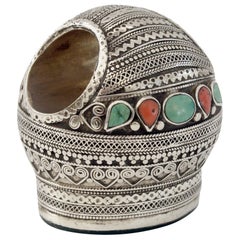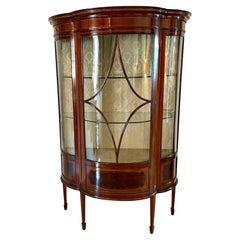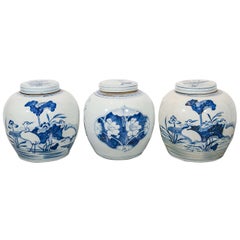Early 1900s Asian Art and Furniture
Afghan Other Antique Early 1900s Asian Art and Furniture
Silver
English Antique Early 1900s Asian Art and Furniture
Mahogany
Chinese Chinoiserie Antique Early 1900s Asian Art and Furniture
Wood
Japanese Meiji Antique Early 1900s Asian Art and Furniture
Wood
Chinese Qing Antique Early 1900s Asian Art and Furniture
Jade
Chinese Antique Early 1900s Asian Art and Furniture
Porcelain
Japanese Meiji Antique Early 1900s Asian Art and Furniture
Ceramic, Stoneware
Japanese Meiji Antique Early 1900s Asian Art and Furniture
Ceramic, Earthenware, Pottery
Chinese Qing Antique Early 1900s Asian Art and Furniture
Elm
Japanese Meiji Antique Early 1900s Asian Art and Furniture
Linen, Silk
Japanese Meiji Antique Early 1900s Asian Art and Furniture
Metal, Enamel, Metallic Thread
Chinese Chinoiserie Antique Early 1900s Asian Art and Furniture
Wood
Japanese Meiji Antique Early 1900s Asian Art and Furniture
Bronze
Chinese Chinese Export Antique Early 1900s Asian Art and Furniture
Wood
Chinese Qing Antique Early 1900s Asian Art and Furniture
Elm
Chinese Qing Antique Early 1900s Asian Art and Furniture
Jade, Silver, Copper
Chinese Chinese Export Antique Early 1900s Asian Art and Furniture
Porcelain
British Arts and Crafts Antique Early 1900s Asian Art and Furniture
Oak
Japanese Meiji Antique Early 1900s Asian Art and Furniture
Ceramic, Earthenware, Pottery
Japanese Taisho Antique Early 1900s Asian Art and Furniture
Ceramic, Stoneware
Japanese Meiji Antique Early 1900s Asian Art and Furniture
Porcelain
Indian Antique Early 1900s Asian Art and Furniture
Brass
Japanese Meiji Antique Early 1900s Asian Art and Furniture
Cedar
Chinese Chinese Export Antique Early 1900s Asian Art and Furniture
Copper
Chinese Qing Antique Early 1900s Asian Art and Furniture
Rattan, Elm
Tribal Antique Early 1900s Asian Art and Furniture
Metal, Steel
Chinese Qing Antique Early 1900s Asian Art and Furniture
Iron
Chinese Qing Antique Early 1900s Asian Art and Furniture
Ceramic, Paint
Vietnamese Chinoiserie Antique Early 1900s Asian Art and Furniture
Wood
Japanese Meiji Antique Early 1900s Asian Art and Furniture
Porcelain
Japanese Meiji Antique Early 1900s Asian Art and Furniture
Porcelain
Chinese Chinese Export Antique Early 1900s Asian Art and Furniture
Teak
Japanese Antique Early 1900s Asian Art and Furniture
Paper
Burmese Other Antique Early 1900s Asian Art and Furniture
Silver
Japanese Meiji Antique Early 1900s Asian Art and Furniture
Rosewood
Chinese Qing Antique Early 1900s Asian Art and Furniture
Wood, Lacquer
Japanese Antique Early 1900s Asian Art and Furniture
Metal
Chinese Qing Antique Early 1900s Asian Art and Furniture
Porcelain
Chinese Chinese Export Antique Early 1900s Asian Art and Furniture
Earthenware
Japanese Meiji Antique Early 1900s Asian Art and Furniture
Bronze, Copper, Enamel
Organic Modern Antique Early 1900s Asian Art and Furniture
Wood, Reclaimed Wood
Italian Antique Early 1900s Asian Art and Furniture
Glass, Wood
Korean Other Antique Early 1900s Asian Art and Furniture
Brass
Primitive Antique Early 1900s Asian Art and Furniture
Wood, Reclaimed Wood
Japanese Meiji Antique Early 1900s Asian Art and Furniture
Copper, Enamel
Antique Early 1900s Asian Art and Furniture
Wood
Indian Islamic Antique Early 1900s Asian Art and Furniture
Silver Plate, Brass
Chinese Edwardian Antique Early 1900s Asian Art and Furniture
Bamboo
Chinese Edwardian Antique Early 1900s Asian Art and Furniture
Wood
Chinese Antique Early 1900s Asian Art and Furniture
Silk
Japanese Meiji Antique Early 1900s Asian Art and Furniture
Ceramic, Earthenware, Pottery, Faux Leather
Country Antique Early 1900s Asian Art and Furniture
Iron
Chinese Chinese Export Antique Early 1900s Asian Art and Furniture
Marble
Primitive Antique Early 1900s Asian Art and Furniture
Wood, Reclaimed Wood
Japanese Meiji Antique Early 1900s Asian Art and Furniture
Bronze
Japanese Anglo-Japanese Antique Early 1900s Asian Art and Furniture
Brass
Japanese Meiji Antique Early 1900s Asian Art and Furniture
Silk, Wood
Tribal Antique Early 1900s Asian Art and Furniture
Metal, Steel
Read More
Chicago’s Pagoda Red Has a Spirited Mix of Asian Antiques and Bold New Art
For 25 years, gallerist Betsy Nathan has leveraged her keen eye and key connections to bring a unique selection of rare finds to the market.
In L.A., Gallerist JF Chen Has Long Championed Eclectic Blue-Chip Design
Now working alongside his daughter Bianca, dealer Joel Chen has presented a most covetable array of antiques, art and contemporary creations for more than 40 years.
12 Calming Spaces Inspired by Japanese Design
From cherry-blossom-adorned walls paired with glamorous lighting to wood-paneled ceilings above checkerboard-patterned chairs, these 12 spaces seamlessly blend Eastern and Western aesthetics.
Rodrigo Rivero Lake’s Mexico City Showroom Is a Museum-Worthy Trove of Spanish Colonial and Asian Antiques
The dealer and curator has spent the past 50 years amassing a collection of exceptional art, furniture and architectural elements that trace the cultural influence of the Spanish empire from Europe to the Americas and beyond.
16 Refined Asian-Inspired Interiors
These spaces exemplify how Eastern elements elevate a home's decor.




